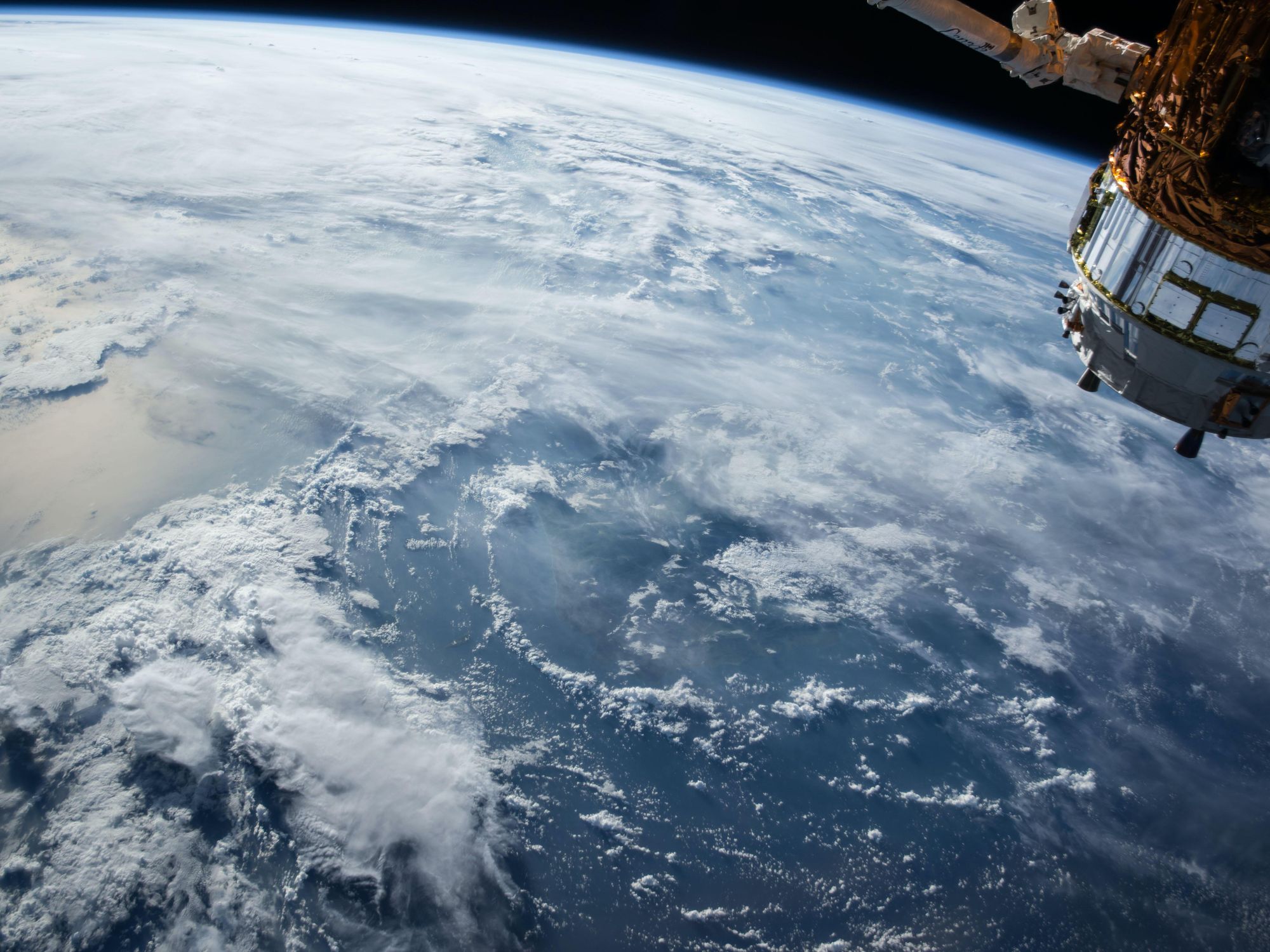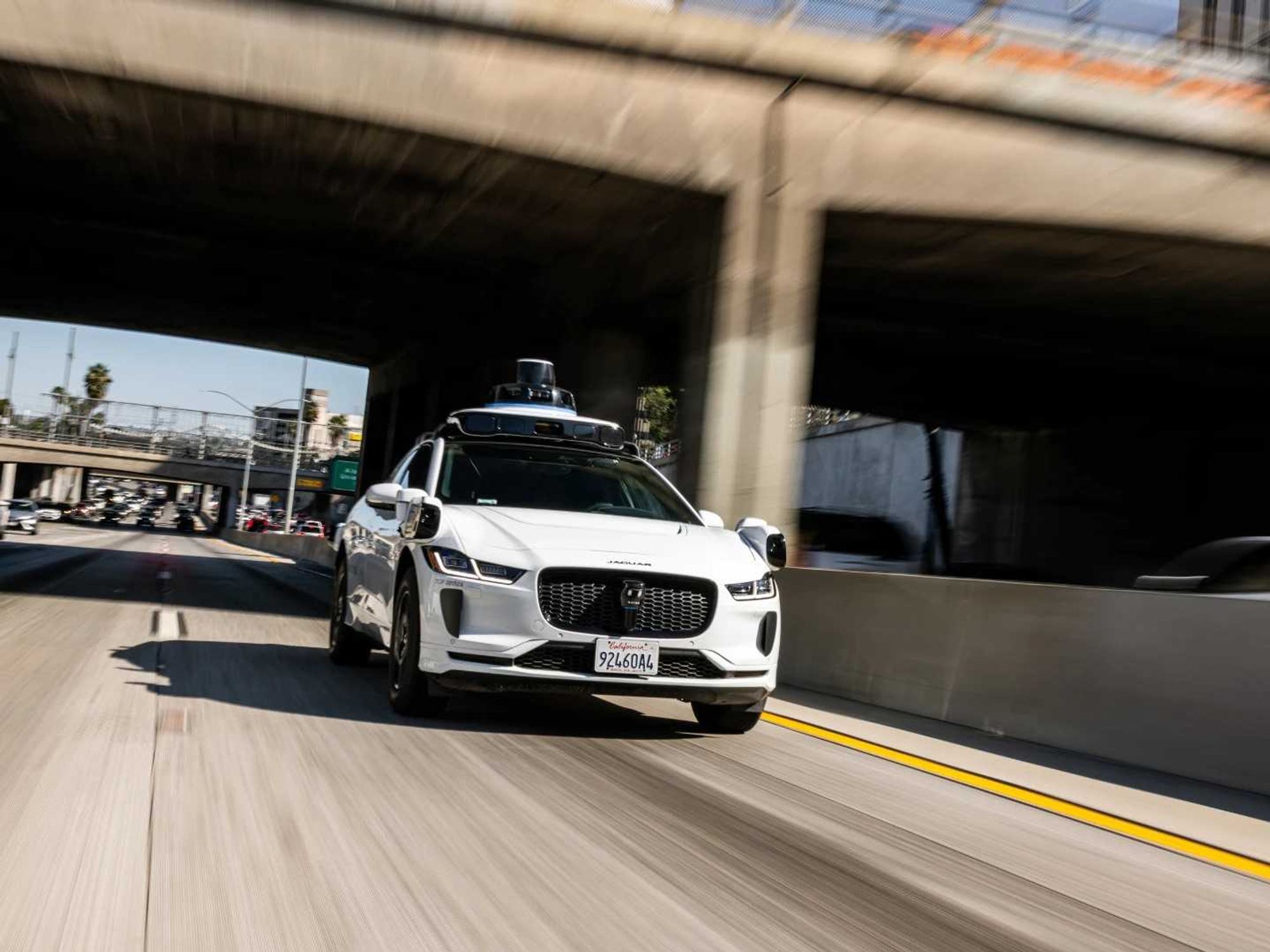Space Tourism, Mergers, Debris and Other Space Tech Trends to Watch in 2022
Samson Amore is a reporter for dot.LA. He holds a degree in journalism from Emerson College. Send tips or pitches to samsonamore@dot.la and find him on Twitter @Samsonamore.

The past year has seen a rapid increase in space exploration, both by professional astronauts and those with enough money to afford a jaunt to the stars.
2021 may be remembered as the year wealthy travelers went to space in droves. The Who’s Who list includes Amazon exec Jeff Bezos, Virgin Galactic founder Richard Branson and millionaires Michael Strahan and William Schatner. But that likely won’t be the end of space tourism.
Viewing the “pale blue dot” of our planet (as Carl Sagan once described it) is a life-changing experience few typically get to have, and it can often change a person’s perspective of their home forever.
“I know a large number of astronauts and every one of them has told me that their view of our world changed the moment they looked back at the Earth,” said Bobby Braun, director of planetary science for NASA’s Pasadena-based Jet Propulsion Laboratory. “All of them have been impacted by this, and they come back with kind of a different view of our Earth and the fact that we're all in this together. I think that's a very positive force.”
As people continue to venture further into space, it will continue to shift the way the aerospace industry approaches working, playing, and maybe, eventually living among the cosmos.
Here’re a few trends to keep an eye on as the space industry accelerates next year.
Space Tourism’s Acceleration
Propelled by suborbital flights from Blue Origin, SpaceX and Virgin Galactic this year, interest in visiting space has skyrocketed.
The billionaires at the helm of these companies, including Jeff Bezos and Richard Branson, may have led the way this past year, but the trend won’t end there. It’s unlikely the average person will be able to travel to space anytime soon;– ’s the price tag for a Virgin Galactic flight into orbit was $50 million in August 2021.
In 2022, it won’t be just private firms looking to capitalize on space tourism. Some nations are already looking to offer trips. Russia, for instance, is asking $60 million per person for a ride to space on its Soyuz rockets.
While interest in space tourism grows, demand for adventures beyond the typical 10-minute sub-orbital trips will accelerate. Expect questions about the future of our species’ experience among the stars to come to the fore, including the big question: Could we eventually live there?
There’s long been talk of making space hotels, crafts that can house travelers in more glamorous conditions than the research-oriented International Space Station. Fontana-based Orbital Assembly is looking to finish a hotel in space by 2027.
Chief Operating Officer Tim Alatorre told dot.LA earlier this year that while we don’t have the ability to build large commercial structures in space yet, “there's no engineering reason for that. It's just a matter of will, and getting all the business and the commerce components in place to make it happen.”
Orbital Debris Will Become a Factor
What goes up must come down, eventually.
As private companies such as Musk’s satellite internet firm Starlink launch more satellites into space alongside a growing number of government launches, the final frontier will become even more crowded.
About 3,000 inactive satellites are still in space, the World Economic Forum reported in May.
Experts say there’s a chance that satellites (or the debris of one-time satellites) could create a greater hazard to essential systems such as GPS. It’s also a potential problem for the ISS crew, which could see missions jeopardized if the station were struck by a piece of debris.
As larger pieces of debris inevitably return to Earth, expect to see more instances of the panic that followed in May when huge pieces of a Chinese rocket landed off the Maldivian coast.
Braun said the JPL is keeping an eye on this, especially after the crew had to go into “shelter mode,” hiding in crew capsules for safety in November as a piece of a Russian anti-satellite weapon test went flying by.
“It's becoming more and more of a problem, because there have been both accidents and deliberate acts where people have proven that they could blow up something in low Earth orbit,” Braun said. When they do, he said, they create a dangerous “swarm of debris” that can just hurtle around the vacuum of space forever if left unchecked.
More Competition for ISS Missions
Missions to the International Space Station have been a cornerstone of NASA’s agenda, but it's been nearly 11 years since the final publicly funded Space Shuttle mission. Governments and private firms are now in a constant competition to out-bid each other for valuable ISS launch contracts.
SpaceX has been the main beneficiary of new contracts, ever since it swooped in to offer a much cheaper ticket to the ISS than the $90 million per-seat Russian rockets. That isn’t to say SpaceX can’t itself be outbid. Companies including Long Beach-based Relativity Space are 3D-printing rockets and quickly becoming a new favorite of the Space Force.
SpaceX doesn’t just carry crew members to the ISS; it will continue to deliver valuable resupply missions for the astronauts living there, and launched its final resupply mission of the year Dec. 21.
Expect More Mergers
A number of space companies went public in 2021, driven in part by a wave of special purpose acquisition mergers (SPACs) that allowed them to raise gobs of funding in a short amount of time. In 2022, that trend could accelerate for space companies, though there are headwinds that could put a damper on the practice.
Merging with a blank-check company to go public was a favorite tactic of tech firms, as it provides a faster route to IPO listing. SPAC deals also allow companies to list on exchanges with sometimes less financial scrutiny. Firms that aren’t yet profitable can still raise large sums by listing via SPAC. Take Astra, a rocket startup that hadn’t conducted a single successful launch by the time of its roughly $500 million SPAC IPO in February.
Rocket Lab went public in August via a SPAC that valued the 15-year-old company at $4.1 billion. The IPO raised at least $777 million for the company, much-needed capital to fuel the development of its newer, bigger rocket: the Neutron – as well as keep launching satellites on its existing reusable Electron rocket, which has launched 107 small satellites since 2017.
Virgin Orbit is planning an IPO through its SPAC in 2022, and it is expected to raise up to $483 million.
Other California-based companies that went public this year included Planet, which raised $500 million in December, and Momentus, which paid $7 million to the SEC to settle a case alleging it misled investors about its technology and national security concerns regarding the background of its founder. The SEC also hit Stable Road Acquisition Corp., the VC-backed blank check firm that merged with Momentus to take it public, with a $1 million fine.
SPAC Research data showed that by March 2021 U.S.-based SPACs raised $87.9 billion, exceeding the total raised in 2020. That number is expected to grow, though SEC Chairman Gary Gensler recently told NPR he plans to crack down on SPACs in the new year as part of a larger plan to regulate markets and “meme stocks.” If it becomes difficult for space startups to raise cash, they’re likely to need to rely on the venture capital market a bit more heavily.
Overall, 2021 was a banner year for the space industry, and it’s expected to grow even more in the coming year. As the industry expands and more private firms compete for valuable launch contracts, it’ll look to overcome long standing challenges that could slow down its rapid growth.
- Long Beach is Becoming Home to the Aerospace Industry Once ... ›
- US Space Force Establishes Tech And Acquisition Arm in LA - dot.LA ›
- Rocket Lab Stock Closes Down in Its Wall Street Debut - dot.LA ›
- Rocket Lab Buys Solar Panel Maker SolAero for $80M - dot.LA ›
- ABL Space Systems Sends Amazon Satellites Into Space - dot.LA ›
- Tech Industry Experts Predict What's Coming in 2022 - dot.LA ›
- Astrolab’s New FLEX Moon Rover - dot.LA ›
- Hadrian to Build Second Factory in Torrance - dot.LA ›
- Vast, Orbital Assembly Race to Build a Commercial Space Station - dot.LA ›
- Virgin Orbit’s Challenges Mount As Its Stock Tanks - dot.LA ›
- What's Next for the Space Industry in 2023? - dot.LA ›
Samson Amore is a reporter for dot.LA. He holds a degree in journalism from Emerson College. Send tips or pitches to samsonamore@dot.la and find him on Twitter @Samsonamore.



 Image Source: Perelel
Image Source: Perelel
 Image Source: Valar Atomics
Image Source: Valar Atomics Image Source: Waymo
Image Source: Waymo Image Source: Apple
Image Source: Apple